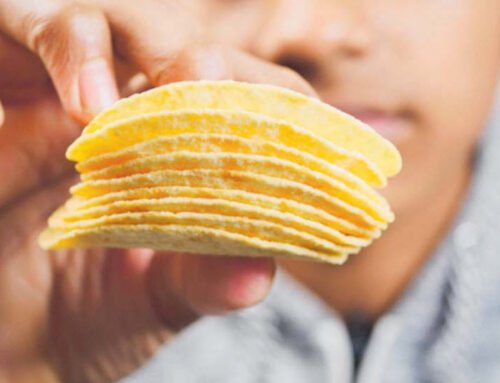Red and green food packaging distracts younger consumers from reading important nutritional information, according to a winning research project at the School Science and Innovation Symposium at Massey University’s Albany campus recently.
Albany Senior High School student Simone Bhagaloo won the Year 13 category with her study on whether food packaging is related to unhealthy eating habits. She wanted to find out if teenagers aged between 15 and 18 paid much attention to nutritional information and ran trials testing responses to the packaging for certain brands of noodles, rice crackers and lunch bars.
Red and green are commonly used in the fast food packaging, with red to evoke hot fast food and green relating to freshness. “These foods are not the healthiest but the colours appeal to consumers,” she says.
Pupils from Rosmini College, Kristin School, Albany Senior and Junior schools, and Manurewa High School, Auckland, took part in the event. They displayed posters and gave presentations on science research projects to academic judges from Massey’s College of Sciences.
Projects by the Year 10 to 13 pupils spanned diverse themes including nutrition, health and sports performance as well as science and environmental themes, and covering subjects from wine chemistry and baby powder ingredients to sports injury recovery and the difference between drop and goal kicks.
Other Year 13 finalists included Albany Senior High School pupil Abbie Wakelin, second, with her project on lunchbox food to give the best glucose reading for a touch rugby player between a training session and a game, and third, Manurewa High School’s Amy van de Weg with her study on chemical reactions in wine from the preservative sulphur dioxide.
Manurewa High School made a clean sweep in Year 12, with Shalini Sanjeshni, first, for her project on the effect of magnetic fields on the growth of radish seeds, Gomathi Rajeskeran, second, who compared absorption, biodegradability and chlorine levels of eco-friendly and standard nappies, and third to Seamay Sok for her study on the effectiveness of pre-fertilised, pre-spaced seed sheets.
The behaviour of honeybees in winter was the winning project by Albany Junior High School pupil William Pearman for the Year 10 to 11 students. William has his own beehive in Albany, and was joined by his beekeeper grandfather Brian Conquer at the symposium.
Manurewa High School’s Daniel Blakeborough earned high praise from judges and second place for his innovative project titled The Sound of Power, using a piezoelectric sensor, which converts sound waves into electricity. In seeking a sustainable method of producing electricity, he carried out tests to see if noise pollution can be turned into electricity and found high-pitched and abrupt sounds were the most effective.
Rosmini College pupil Aiden Widdows came third for his study on the effectiveness of Power Balance bracelets, which claim to improve balance, flexibility and strength.
The symposium has been running at the Albany campus for the past five years. Winners in the Year 13 group won bursaries valued at $3000, $2000 and $1000 respectively for first, second and third.









